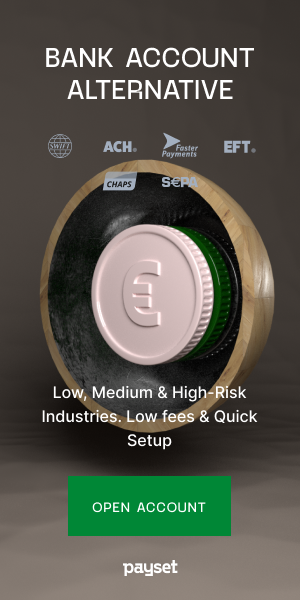
Building Robust Trading Apps for Retail Investors
Mar 29, 2024, 4:29PMIn recent years, the increase in people entering the investing world has led to a greater demand for trading apps specifically designed for them.
These solutions let users buy and sell stocks, cryptocurrencies, and other assets right from their phones or computers.
But financial application development, especially when it comes to making a good buying and selling platform for small investors can be problematic. It requires careful planning and ensuring everything works properly.
This article talks about the essential steps for making robust trading applications that non-professional people can easily use.
What Are Trading Apps?
Trading apps are programs that help people buy and sell stocks, bonds, and cryptocurrencies.
They give users access to information about the markets, tools to analyze data, and ways to trade so they can make smart decisions about their investments right away.
Lately, these tools have become more popular among amateur investors because they're convenient and make financial markets available to everyone.
The Benefits of Building a Custom Trading Platform
Opting for a custom stocking tool instead of ready-made solutions comes with several clear benefits.
Firstly, you have the freedom to design features and functions that perfectly match what your users need.
Unlike pre-made options, custom programs let you include advanced tools like personalized trading algorithms and connections to other services, which makes the user experience more unique and engaging.
Bespoke programs also help reinforce your brand identity. While off-the-shelf solutions often have generic looks, custom apps let you add your logos, colors, and styles, making your software stand out and feel more like your own.
Scalability is another advantage. Custom programs can grow and change as your business does without the limitations of pre-packaged solutions. This means you can adapt to new opportunities and user needs more quickly.
When it comes to security and following the regulations, custom solutions give you more control. You can build strong protections for customer data and transactions and make sure your software meets all the legal requirements for your industry.
Lastly, bespoke applications offer a better user experience. You can tweak and improve the design and features based on client feedback, ensuring they have a positive and enjoyable time using your software.
Steps to Creating a Trading App for Retail Investors
Creating a platform for non-professional financiers requires going through some important steps to ensure it is helpful and works well:
Understanding Retail Investors and Their Needs
Before starting to build the app, it's crucial to do thorough research. This means precisely understanding what regular equity holders want and need.
You'll look at things like how they invest, what they want to achieve, how much risk they're comfortable with, and what they like to trade. By learning all this, you can design a program that's just right for them.
Designing User-Friendly Interfaces
To attract amateur people who invest in stocks and help them engage with the platform more often, it's vital to have a convenient interface. Make sure the program is easy to navigate, with a layout that's clear and looks nice.
Users should find it simple to check their accounts, see market information, and trade. Test the application with real people to confirm it's convenient, and they're happy with it.
Integrating Real-Time Market Data
Including live updates from the stock market is essential for giving regular people who invest accurate and current info about prices, trends, and news. Pick trustworthy sources for this info and set up ways to get it quickly.
Think about letting traders create lists of stocks they're interested in, get alerts when prices change, and give them tools to analyze the market, so they can make smart choices when they trade.
Implementing Trade Execution and Order Management
Another crucial factor for non-professional financiers is being able to buy and sell stocks.
Create strong systems for placing orders and managing different types of orders, such as market orders, limit orders, and stop-loss orders. Also, check whether users can easily track the status of their orders.
Incorporating Risk Management and Portfolio Analysis Tools
To assist financial rookies in handling their investment risks well, add tools to the platform for managing risks and analyzing their portfolios.
These tools can include evaluating risk levels, checking how diversified their investments are, tracking how well their investments are doing, and calculating profits or losses.
By giving investors this kind of information, they can better understand how their investments are doing and decide what to do next.
Addressing Security and Compliance Requirements
Keeping private information and transactions safe is extremely important in finance, especially when it comes to sensitive data.
Apply strong security measures like encrypting data, two-step verification, and secure communication methods to protect users.
Also, follow rules and regulations like KYC, AML, and GDPR to maintain trust with investors and ensure everything is done legally.
Offering Educational Resources and Customer Support
Educational resources and customer support allow small-scale investors to feel confident and get help when needed. Provide tutorials, articles, and webinars to help users learn about trading and how the market works.
Also, offer different ways for customers to get help, like live chat, email support, and FAQs, to answer their questions or solve any problems they have.
Optimizing Performance and Scalability
Ensure the software runs as intended and can handle a user base, especially when many people are buying and selling at the same time. Test it thoroughly to find and fix any problems that slow it down.
Improve the code's efficiency and ensure the servers can handle the workload. Keep an eye on the app's performance and update it regularly to keep up with more users and new technology.
Conclusion
Creating strong trading apps for retail investors needs a thorough plan that meets investor needs, applies the latest technology, and focuses on security and convenience.
By following all the recommendations for making software suggested in this article, you can develop a platform that will help individuals confidently trade and get the most out of financial markets.
Disclaimer: information contained herein is provided without considering your personal circumstances, therefore should not be construed as financial advice, investment recommendation or an offer of, or solicitation for, any transactions in cryptocurrencies.

















